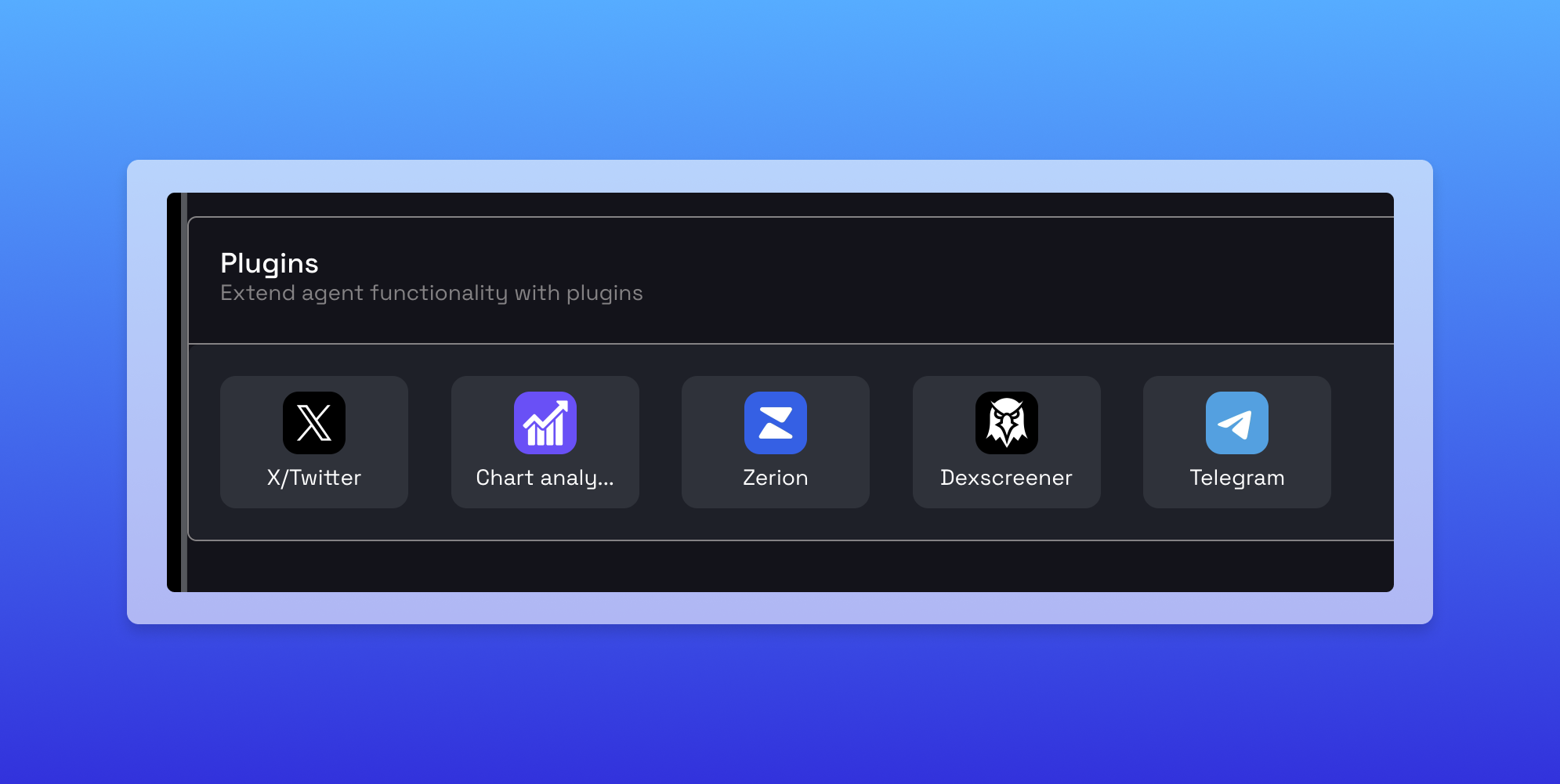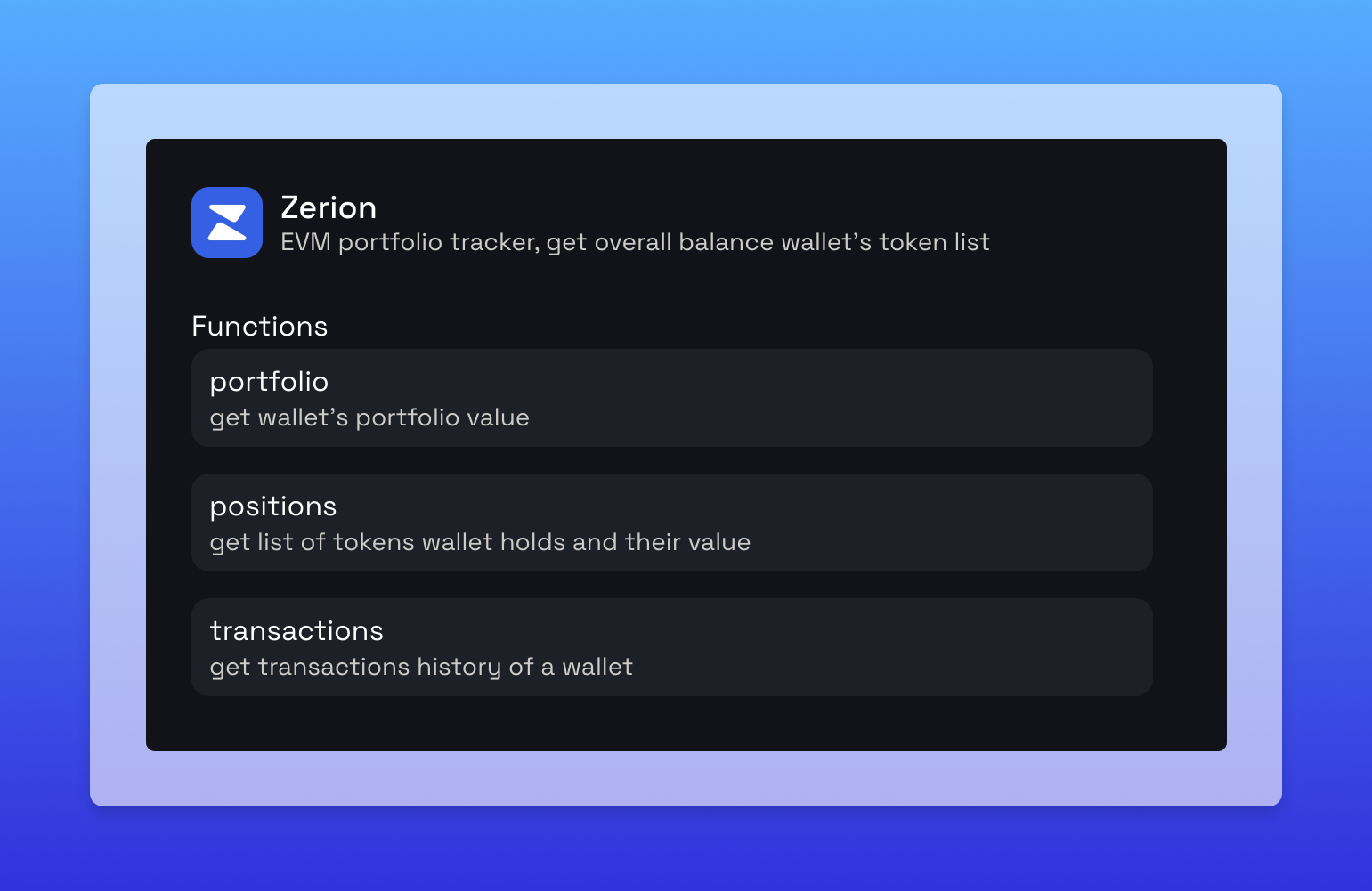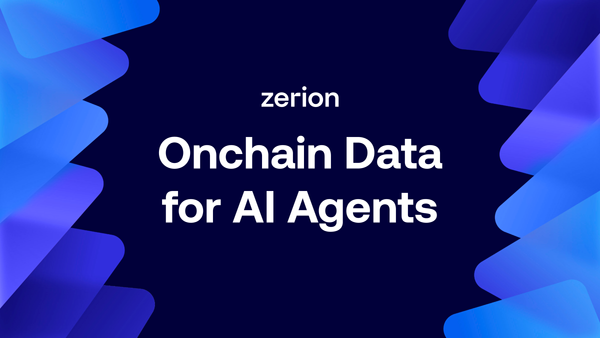AI agents have emerged as a full-blown new crypto category. Endlessly creating content, replying 24/7, and even sending tokens at their discretion, AI agents are great at capturing attention. However, most agents today are still far from full autonomy. Access to onchain data is one of the major hurdles to achieving greater sentience and sovereignty. In this post, we’ll explore the present and the future of AI agents and how tools like Zerion API are paving the way for their evolution.
AI Agents Today
There are two opposing opinions about AI agents:
Some see AI agents as the future of blockchain—a new kind of user who will soon far outnumber humans using crypto. Agents can simplify onboarding for new users and make crypto more accessible to everybody, abstracting away blockchain complexities.
The skeptical view is that AI agents are just a glorified version of bots.
The truth is probably somewhere in between. AI agents are based on LLM models, and unlike bots, they don’t have pre-programmed behavior. However, they also don’t have full autonomy simply due to the way they are set up.
Most AI agents today are built using:
- LLM models such as ChatGPT, Claude, Llama, or even several instances (infinite backrooms) as in the terminal of truths,
- Data for training or tuning the model,
- Connectors for receiving prompts and sharing output via platforms like X, Discord, or Telegram,
- Memory for maintaining coherent personalities,
- An ERC-20 token affiliated with the agent.
Of course, the token is what most degens see and care about.
Yet the token isn’t the only onchain component. Some agents also control wallets and can make transactions. It is essentially another connector for sharing output.
For example, Farcaster-based AI agents like Aethernet and Clanker are experimenting with wallet interactions. Aethernet tips users and creates NFT mints. Clanker launches new tokens, deploying smart contracts and liquidity pools. These agents showcase the potential for AI to directly manage onchain activity.
Other agents like Freysa strive for sovereignty, where they have exclusive control over a wallet's private keys.
However, most popular AI agents today don’t yet see or use onchain data.
Onchain AI Agents of Tomorrow
In the future, we can expect AI agents to gain full access to onchain data.
But there’s a challenge: LLM-based AI agents operate in human language and cannot easily process raw onchain data in hexadecimal or bytes. For example, a raw transaction hex looks like this:

The hex contains all the information about the transaction, but it's unreadable to both humans and LLMs. It can be decoded to JSON but it's extra work. And it would still lack contextual understanding of data such as smart contract calls.
This limitation hinders their ability to understand wallet contents, transactions, and relationships between them.
For AI agents to truly unlock autonomy, they need tools that make onchain data as accessible and comprehensible as human language.
Agents, meet Zerion API
Zerion API makes onchain data easy to use and understand for both humans and LLMs.
This API powers Zerion Wallet and is used by many top apps and teams. Examples include wallets like Rainbow and Uniswap, DEXes like Shapeshift, and social trading apps like Frens.
Some projects also Zerion API for fast experimentation. For example, within the Farcaster ecosystem, the founders of Clanker (@proxystudio) and Anon.World (@slokh) also used Zerion API during their pre-PMF eras.
By simplifying access to onchain data, Zerion API helps developers show portfolios, tokens, transactions, and more in their dapps.
What Does Zerion API Include?
Zerion API includes endpoints for a wide range of data across dozen EVM chains — it’s the same data that powers Zerion Wallet.
- Wallet Portfolio Data: Comprehensive overviews of tokens, NFTs, and DeFi positions.
- Transaction History: Detailed and aggregated data across multiple chains.
- Token and NFT Prices: Real-time and historical market data.
By turning raw blockchain data into structured, readable information, Zerion API empowers AI agents to become smarter and more autonomous.
- Readable Quantities and Values: The API precomputes human-readable values (e.g., 0.2237 ETH, $385.73), so no byte-level processing is needed.
- Contextual Metadata: Details like ticker, name, and icon make it easier for AI agents to identify and describe the asset.
- Linked Relationships: Predefined links to chain or token metadata allow the AI to enrich responses without processing raw hexadecimal data.
To see the potential of Zerion API in action, let’s look at its integration within Loomlay, a platform designed to build AI agents with zero code.
How Loomlay Gives Zerion API to its Agents
Loomlay is a platform designed for creating and launching AI agents. It simplifies the development process for builders by providing powerful tools and plugins, including Zerion API.
How Loomlay Uses Zerion API
Loomlay offers Zerion API as a plugin for its AI agents, enabling developers to unlock a range of new capabilities.

By integrating Zerion API, AI agents built on Loomlay can:
- Track wallet balances and transaction histories in real time.
- Provide personalized DeFi insights based on user holdings.
- Generate actionable recommendations powered by accurate blockchain data.

With Zerion API unlocking new possibilities, the potential use cases for AI agents expand significantly.
Let’s explore how onchain data can enhance agent functionality.
Use Cases for AI Agents with Onchain Data
With access to onchain data through Zerion API, AI agents will be able to perform advanced tasks such as:
- Roasting Your Trades: Analyze wallet holdings and transaction histories to generate humorous or insightful commentary on past decisions.
- Benchmarking Wallet Performance: Track and compare portfolio PnL (profit and loss) against market trends or other wallets.
- Personalized Recommendations: Offer tailored suggestions for optimizing DeFi positions, identifying investment opportunities, or diversifying assets.
- Transaction Monitoring Alerts: Notify users of large or suspicious transactions in real time.
- NFT Market Insights: Provide recommendations based on trending NFT collections, ownership data, or floor price changes.
- DAO Participation Assistance: Suggest and execute voting decisions based on DAO proposals and user-defined preferences.
- Yield Optimization: Recommend DeFi protocols with higher yields based on the user’s portfolio and risk tolerance.
- Onchain Tax Calculation: Automatically calculate estimated tax liabilities based on wallet transaction history.
This just scratches the surface. Undoubtedly new popular use cases will emerge that we currently cannot even imagine.
What’s Next
The integration of onchain data into AI agents is a significant step toward making them more autonomous and useful. As platforms like Loomlay continue to adopt tools like Zerion API, we can expect the next generation of AI agents to not only entertain but also empower crypto users with actionable insights.
Whether you’re a builder or a crypto enthusiast, you can play your part in building the future of AI agents. Get your Zerion API key to get started!

